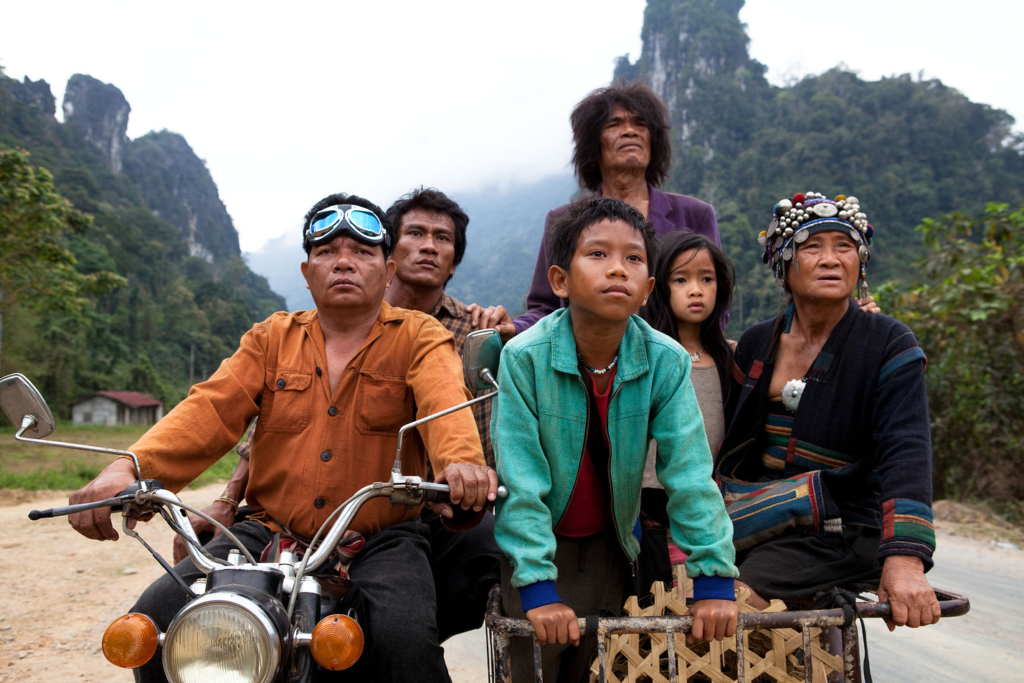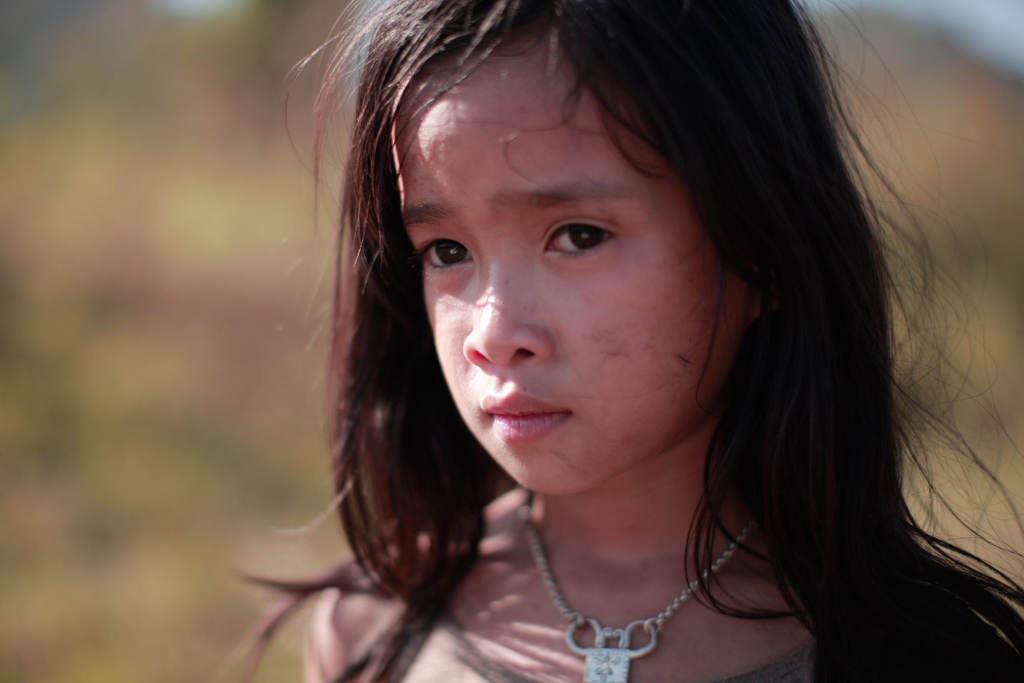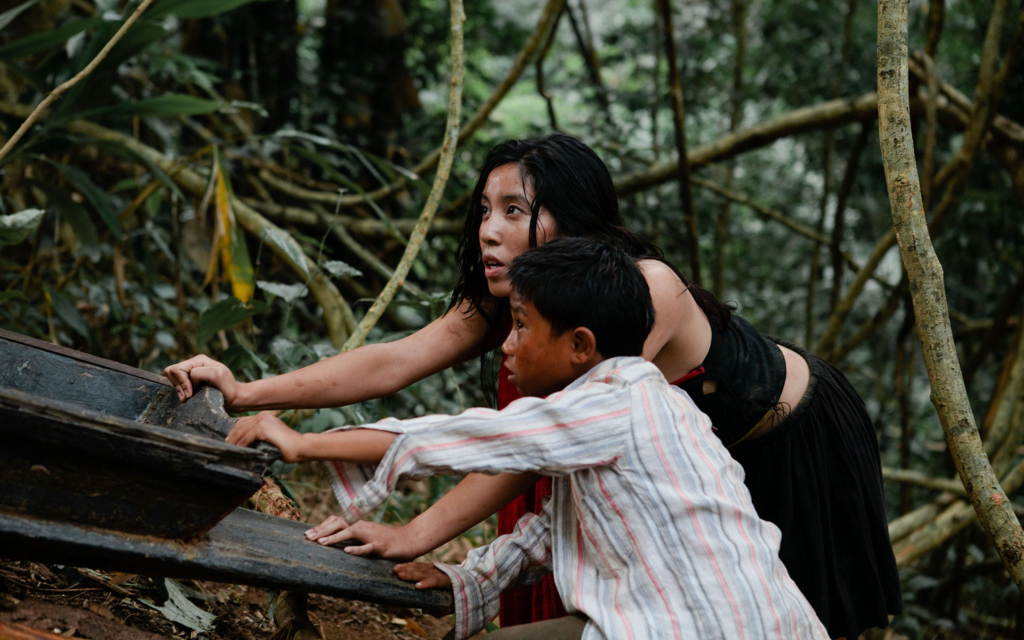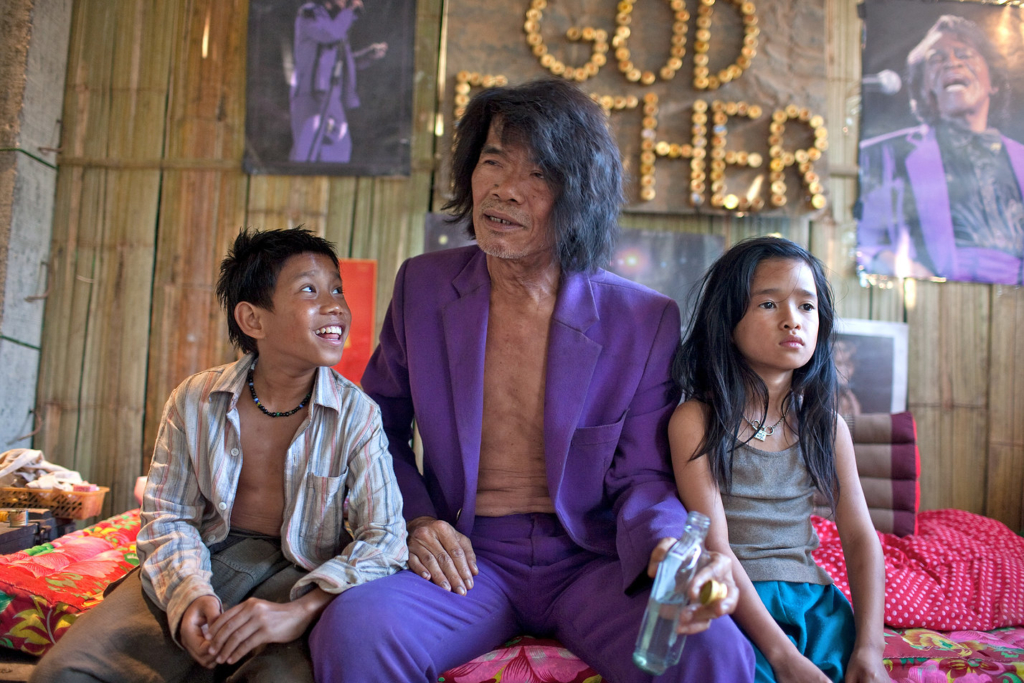When I saw The Rocket (Kim Mordaunt), which was filmed in Laos and spoken in the native tongue of Lao, at the 2013 Tribeca Film Festival, I was surrounded by a mostly appreciative American audience who sounded surprised when the Australian funding logo came up. Should Australia be making films that don’t tell ‘our’ stories? The question has been discussed frequently lately, especially in the hubbub surrounding Baz Luhrmann’s is-it-Australian-or-isn’t-it The Great Gatsby (2013). The Rocket may not be about Australia per se, but Australia is part of a global industry that should be seeking to make films without having to adhere to mere border restrictions. As Australian society becomes more culturally diverse, so too must our cinema.
This past decade has seen a dramatic growth in the number of films made by and about Indigenous people, but films reflecting the changing languages, accents and faces of our population have remained mostly stagnant. Sadly, it’s still news when a family of Asian descent moves into Ramsay Street on Neighbours, and powerful yet entertaining examinations of immigrant youth like Falling for Sahara (Khoa Do, 2011) go unreleased outside of film festivals.

As a case in point, there have only been five Australian films submitted to the Academy Award Foreign Language Film category since 2000.[1]Glenn Dunks, ‘TIFF: Lore, Australia’s Formidable Oscar Contender’, The Film Experience, 8 September 2012, <http://thefilmexperience.net/blog/2012/9/8/tiff-lore-australias-formidable-oscar-contender.html>, accessed 1 July 2013. Of those, Ten Canoes (Rolf de Heer, 2006) and Samson & Delilah (Warwick Thornton, 2009) are spoken in native Indigenous languages, while La Spagnola (Steve Jacobs, 2001), The Home Song Stories (Tony Ayres, 2007) and Lore (Cate Shortland, 2012) are mostly spoken in Spanish, Cantonese and German respectively. As an indicative example of the predominance of English dialogue in our film industry, it’s a compelling statistic that suggests not even one Australian film per year utilises a language other than English for its primary dialogue. That seems awfully unrepresentative of the crisscrossing, free-flowing dialects one hears in any major Australian city.
The Rocket may not be about Australia per se, but Australia is part of a global industry that should be seeking to make films without having to adhere to mere border restrictions.
Compounding the unhealthy obsession with what constitutes ‘our’ stories are the mixed fortunes of Australian features in recent years, which are testament to the diminishing of ‘Australia’ as a brand. Unlike the 1970s or 1990s, Australian films are getting lost in the international shuffle brought about by the globalisation of world cinema. As seemingly more and more Australian films get produced, more and more sink without a trace on the world stage. A few are given token limited releases by boutique arthouse distributors, but often these lack the resources to properly sell the films to mass audiences without the hook of an auteur or exotic language.

As a result, some of our industry’s smarter members have begun looking beyond our easily defined borders and dialects, and branching outwards to embrace cultures and stories that don’t embody the ‘typical’ Australian way of life. Luhrmann has long sought American funding to help bring his distinctly Australian (if not always Australian-set) visions to big screens across the globe. The Australian-produced, German-language World War II drama Lore has been a success at festivals around the world as well as grossing US$970,325 at the American box office.[2]‘Lore’, Box Office Mojo, 2013, <http://www.boxofficemojo.com/movies/?id=lore.htm>, accessed 6 July 2013. French–Australian co-production Adore (Anne Fontaine, 2013), which has a French director but was filmed on local shores with Australian actor Naomi Watts, premiered at the celebrated Sundance Film Festival and has international distribution tied up.[3]Mike Fleming Jr, ‘Naomi Watts & Robin Wright Sundance Pic Gets Release Date and New Title’, Deadline,30 May 2013, <http://www.deadline.com/2013/05/naomi-watts-robin-wright-sundance-pic-gets-release-date-and-new-title/>, accessed 28 June 2013. And the genuinely ludicrous Bait (Kimble Rendall, 2012) had its tepid local box office performance rescued by receipts from China,[4]Arclight Films, ‘Bait 3D makes $20m at Chinese box office’, mUmBRELLA, 26 October 2012, <http://mumbrella.com.au/bait-3d-makes-20m-at-chinese-box-office-123125>, accessed 28 June 2013. an official co-producer (alongside Singapore) of the sharks-in-the-supermarket thriller.
The Rocket marks the continuation of this shift in Australian cinema towards a more global outlook. Mordaunt has lived, taught and filmed throughout South-East Asia, and his experience with the region and its people has served him well here. The film, his first since award-winning documentary Bomb Harvest in 2007, is one of immense charm, with an infectious sense of lovability that makes its flaws easier to overlook. It’s not perfect, but this whimsically endearing film about custom and tradition is so impeccably cast and gorgeously filmed that it’s definitely one to cherish.

The Rocket follows the trials and tribulations of a young boy named Ahlo (played here with big-toothed glee by first-time actor Sitthiphon Disamoe). Ahlo’s twin brother died during childbirth and, with custom dictating that one twin is bad and the other good, the boys’ grandmother, Taitok (Bunsri Yindi), suggests killing Ahlo, who is believed to be cursed, to save the family’s name from ruin. Mother Mali (Alice Keohavong) and father Toma (Sumrit Warin) disagree and merely keep the news of their twins a secret. Ahlo is then raised by his parents as though a normal only child; however, the family’s misfortunes begin almost instantaneously. Their troubles culminate many years later when they are forced out of their village by a government dam-demolition project. Ahlo, now ten years old, helps his parents move house but, following an accident that is shocking to both the characters and the audience, becomes directly responsible for a death.
From here, the film becomes a road movie of sorts, with the mourning Mali, Toma and Ahlo traversing the difficult Laotian countryside for a place to call home. They find ghost towns and villages fearful of outsiders as they struggle to stay together with only the food in their stomachs and clothes on their well-worn backs. Meanwhile, Ahlo improbably decides to prove his family and his culture wrong by any means necessary, including entering a highly dangerous rocket-building contest in a nearby township. There, he enlists the help of friend Kia (Loungnam Kaosainam) and ‘uncle’ Purple (Thep Phongam), a James Brown aficionado in a snappy but culturally anachronistic hued suit.
As beautiful as the rich green forests of the region are, they hold an unspecific danger that gives Ahlo’s so-called curse credence.
Set in an undefined time period, The Rocket has a timeless quality. Its blend of tough and soft, mixed with the seemingly untainted Lao landscape and people, lend it a dreamy air that could easily mark it as either a modern-day or period fable. Yet as beautiful as the rich green forests of the region are, they hold an unspecific danger that gives Ahlo’s so-called curse credence. Rarely filmed Laos has an otherworldly quality that’s hard to define. But the ravages of war offer a very real-world danger to a place that, as Mordaunt’s film shows, is so frequently preoccupied with danger of the more spiritual and mystical variety.
The Rocket is a feel-good tale for sure, but one that carries with it the ghosts of an entire nation. It’s simple, but not simplistic. The darkness of the region never overshadows the underdog tale at the film’s centre, but it provides a nice counterbalance to its innocence, which can be hard to take from some other films. The climactic sequence of the film, the rocket festival, will see tense, tightened jaws and wide grins in equal measure, but thankfully Mordaunt never forgets that there are stakes in the world that can’t be fixed by cheers and tears of joy. It can be a difficult tightrope to navigate, but it makes for refreshing cinema to watch when the stakes are tangible and human.

For all Mordaunt’s abilities in bringing Laos to the screen, The Rocket ultimately feels distinctly Australian. It nods to iconic Aussie films Strictly Ballroom (Baz Luhrmann, 1992) and Muriel’s Wedding (PJ Hogan, 1994) – in spirit more than anything else – with their feisty protagonists aiming to prove to the world that they’re not entirely the messed-up black sheep everybody believes them to be. It’s not just this, though; the character of Ahlo has a personable, happy-go-lucky attitude in the face of adversity that echoes the famous Aussie larrikin spirit that played such a vital part in the Australian identity of the 1970s and 1980s, as seen in movies like Crocodile Dundee (Peter Faiman, 1986).
With cinematographer Andrew Commis, editor Nick Meyers, production designer Pete Baxter and composer Caitlin Yeo, The Rocket is also a talented Australian affair behind the scenes. This is in stark contrast with the film’s cast, which is made up of predominantly untrained, debut actors. That Mordaunt was able to coax these sort of affable performances from the likes of Disamoe and Phongam especially is a treat.
It has already done better than any other Australian film from 2013 in terms of exposing local cinema to international crowds.
While the language barrier will be a significant hindrance to The Rocket replicating anything close to the success of another recent feel-good tale, Red Dog (Kriv Stenders, 2011), it has already done better than any other Australian film from 2013 in terms of exposing local cinema to international crowds. Not only has it sold to many territories, including the US, it has also won the prestigious Best First Feature award at the Berlin International Film Festival, both Audience and Narrative Feature prizes at the Tribeca Film Festival, as well as the Audience Award for Best Feature at the Sydney Film Festival.[5]‘Australian Selection: The Rocket at CinefestOZ Film Festival’, IF.com.au, 19 July 2013, <http://if.com.au/2013/07/19/article/Australian-Selection-The-Rocket-at-CinefestOZ-Film-Festival/CCYAWQXCOT.html>, accessed 14 August 2013. Most recently, it garnered the People’s Choice Award at the Melbourne International Film Festival.[6]Karl Quinn, ‘The Rocket Keeps Rising with MIFF award’, The Age, 13 August 2013, <http://www.theage.com.au/entertainment/movies/the-rocket-keeps-rising-with-miff-award-20130813-2ru6g.html>, accessed 14 August 2013. It would be nice to see filmmakers – and funding bodies, for that matter – take heed of The Rocket’s success on the international market and see that non-Anglo cultures that have made Australia their home have stories of worth. The Rocket may be a coming-of-age tale, which Australian cinema certainly has no shortage of, but it is unique and doesn’t lend itself to lazy, generic exoticism.
The Rocket pushes the film industry out of its self-imposed comfort zone. It should be a new poster child for modern-day Australian cinema: a multicultural effort that brings Australian technicians and skills to global audiences. Despite the lack of an Australian setting or the English language, the film has a distinctly Australian spirit to it that has an effective impact. It may not look or sound like any Australian film before it, but that is exactly why it works so well and likely why it will see more international success than any number of Australian films about predominantly white suburbanites. As an example of filmmaking it’s engaging, funny, sweet and formally sublime. As an example of Australian filmmaking, however, it’s refreshing and something completely new.
Endnotes
| 1 | Glenn Dunks, ‘TIFF: Lore, Australia’s Formidable Oscar Contender’, The Film Experience, 8 September 2012, <http://thefilmexperience.net/blog/2012/9/8/tiff-lore-australias-formidable-oscar-contender.html>, accessed 1 July 2013. |
|---|---|
| 2 | ‘Lore’, Box Office Mojo, 2013, <http://www.boxofficemojo.com/movies/?id=lore.htm>, accessed 6 July 2013. |
| 3 | Mike Fleming Jr, ‘Naomi Watts & Robin Wright Sundance Pic Gets Release Date and New Title’, Deadline,30 May 2013, <http://www.deadline.com/2013/05/naomi-watts-robin-wright-sundance-pic-gets-release-date-and-new-title/>, accessed 28 June 2013. |
| 4 | Arclight Films, ‘Bait 3D makes $20m at Chinese box office’, mUmBRELLA, 26 October 2012, <http://mumbrella.com.au/bait-3d-makes-20m-at-chinese-box-office-123125>, accessed 28 June 2013. |
| 5 | ‘Australian Selection: The Rocket at CinefestOZ Film Festival’, IF.com.au, 19 July 2013, <http://if.com.au/2013/07/19/article/Australian-Selection-The-Rocket-at-CinefestOZ-Film-Festival/CCYAWQXCOT.html>, accessed 14 August 2013. |
| 6 | Karl Quinn, ‘The Rocket Keeps Rising with MIFF award’, The Age, 13 August 2013, <http://www.theage.com.au/entertainment/movies/the-rocket-keeps-rising-with-miff-award-20130813-2ru6g.html>, accessed 14 August 2013. |





